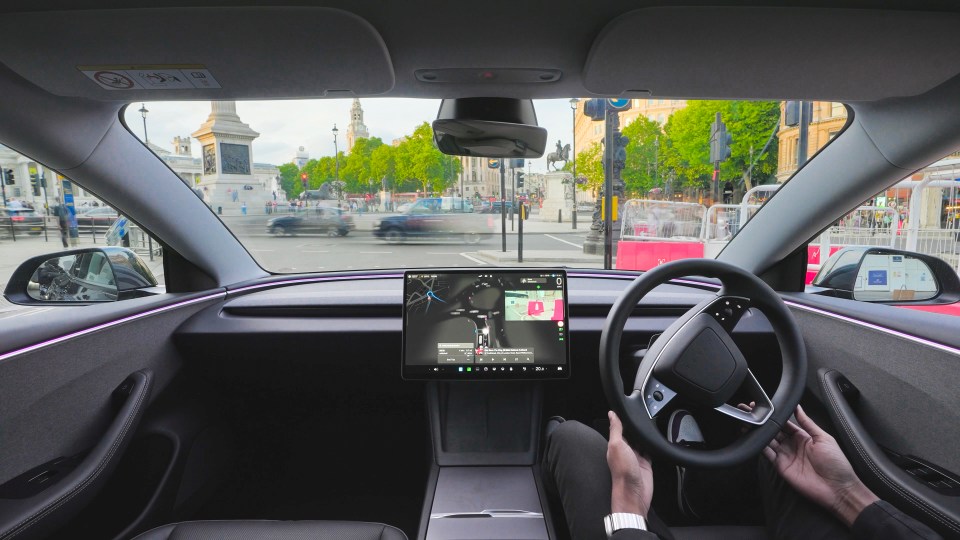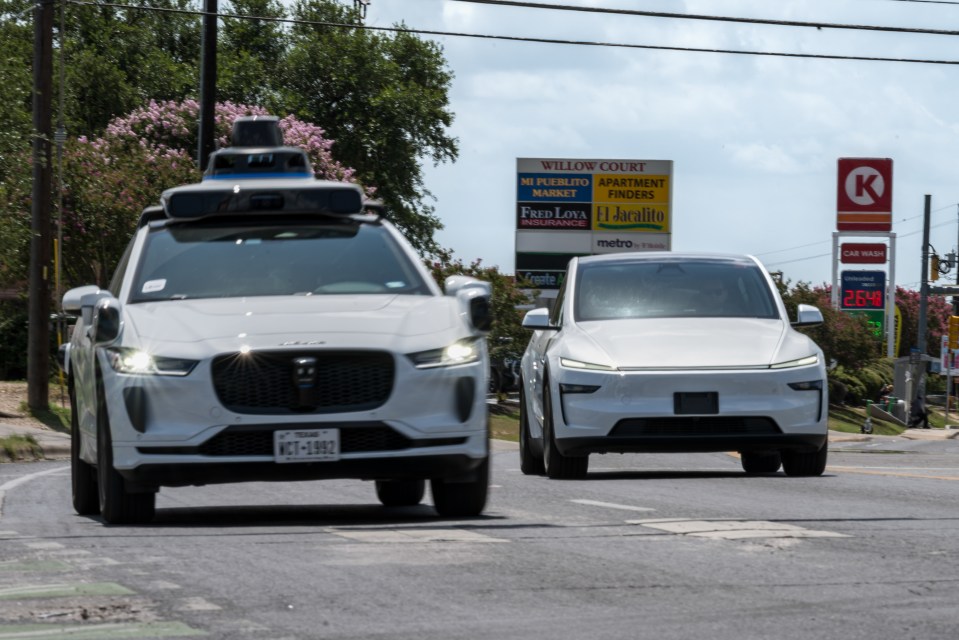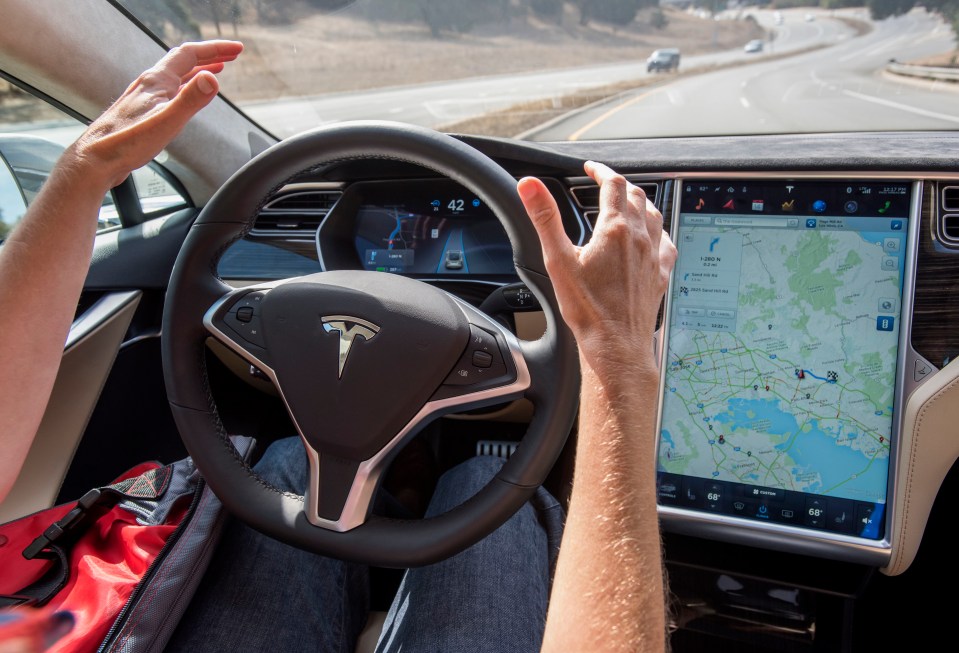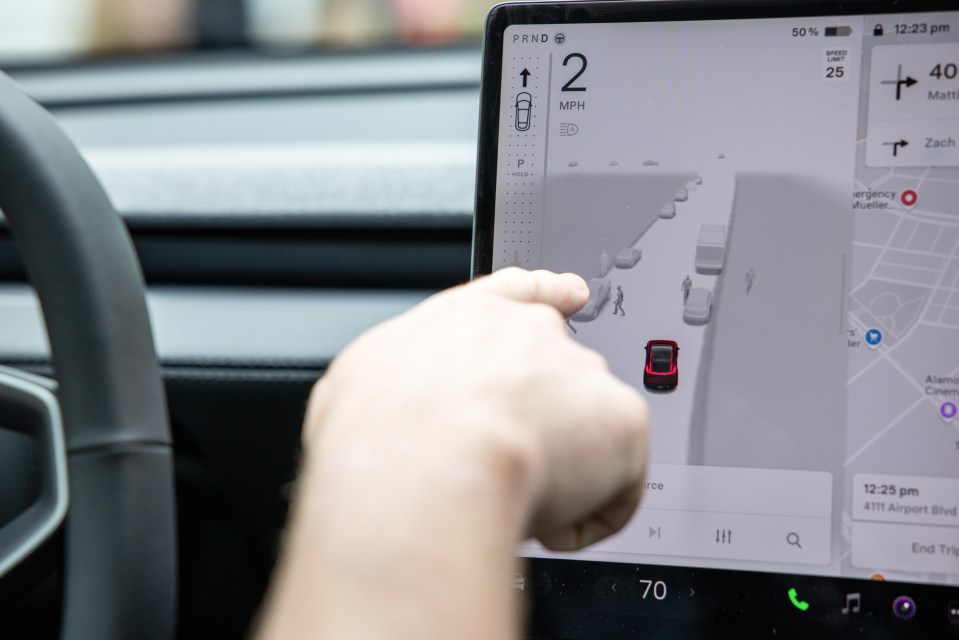AN EXPERT has opened up on the challenges the UK faces as it approaches the adoption of self-driving technology.
Recently, mega-brand Tesla revealed footage of two major test runs of one of its cars negotiating central London and Swindon’s Magic Roundabout – without human intervention.
The clips showed a Tesla Model 3 navigating past iconic locations in central London, as well as Swindon’s Magic Roundabout – a complex system of five mini-roundabouts arranged in a circle around a larger central one – while the person in the driver’s seat was not holding the steering wheel.
But the technology’s potential and its imminent nationwide rollout – which could be by spring 2026 – have understandably sparked public concerns about safety, while also bringing up discussions on the transformative impact on the automotive industry.
John Kushnick, Legal Operations Director at the National Accident Helpline, has been closely following these developments.
He recently spoke to Sun Motors about how the tech could enhance safety and revolutionise transportation, although he remains cautious about its readiness for widespread adoption – citing public mistrust, regulatory hurdles and the necessity for greater transparency from manufacturers.
Indeed, John emphasises that brands, such as Tesla, need to do a lot of work in addressing public mistrust.
“Everything has got to be transparent and I think that’s where it has been lacking,” he said.
“If we look at Diesel-Gate as an example, if we leave it to companies, it will always be seen as in their best interest to hide any issues rather than show them in hope that they’ll get away with it.
“None of us really know how self-driving cars work because they use massively complex software and AI in the background to make decisions – so we’re never going to understand that.
“We have to be sure that the companies understand it and then they’re going to act in our best interest.”
To address the public’s potential mistrust, John believes manufacturers will have their work cut out to show they’re willing to be open with the public – including the way they record and display their data, especially around accidents.
He also highlights the need for a comprehensive regulatory framework to manage self-driving technology, explaining how regulators like the DVSA are not yet prepared to handle the complexities of self-driving vehicles.
“They’d have to up their game,” said John.
“You need some quite high-tech solutions to this because you’re going to need to be having pretty regular updates to their systems.”
One particular concern is legal and regulatory barriers, such as grey areas around liability when the car transitions control back to the driver.
John explains that liability depends on the mode in which the car was operating.
If the vehicle is in self-driving mode during an accident, the manufacturer is liable.
However, if the driver takes over control, the responsibility shifts to them.
He highlights grey areas where self-driving assistance fails or where the car detects it cannot operate properly and passes control back to the driver.
Quoting a report by Faction, a company focused on developing autonomous vehicle technology, he said: “If it’s in self-driving mode and it has an accident, then the liability goes on to the manufacturer.
“If the driver has taken over control, then it’s going to be on them.
“The grey area will be where it’s assisted and the assistant doesn’t work properly.
“There’s also going to be situations where a car’s in self-driving mode but it then detects that it can’t work properly or it doesn’t understand the layout, and it passes over to the driver.
“That’s where you’d have to be able to say, have they been given enough time? Has anyone else taken over? If not, then the liability goes on the driver.”
Indeed, John warns that any major accidents during the rollout of self-driving cars could severely harm public perception and slow adoption.
He stresses the importance of careful implementation to avoid catastrophic incidents.
Another problem that John points out is the UK’s older and more complicated road infrastructure, which poses significant challenges for self-driving technology.
Narrow roads, potholes, and rural areas make it harder for autonomous vehicles to operate reliably, compared to places in the US like Arizona or San Francisco, where self-driving cars are currently in operation.
John said: “In Arizona, it’s a classic, you’re not going to see many cars passing you, they’re nice straight roads and San Francisco’s, with a lot of those roads built on grids.
“That does make it easier. It is much harder where you’ve got potholes, which can then make the vehicles react in an unpredictable way. You’ve got narrow roads.
“How are the rules going to go, where you really have not got quite enough space for two vehicles? Is it just going to stop and not do anything?
“You’ve got all sorts of more complications here, because we’ve got older roads, we’ve got narrower roads, more rural roads.
“I also think we’re slower to adopt energy. Once we see self-driving cars operating successfully in certain circumstances, I think public perception will start to shift.”
5 ways self-driving cars could benefit the UK
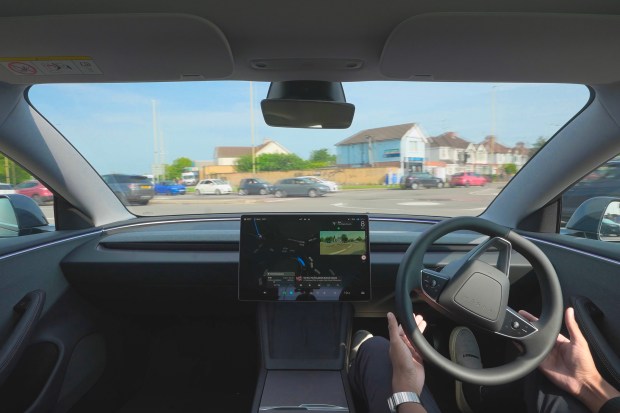
- Improved road safety – self-driving cars can reduce accidents by eliminating human error
- Learning and adaptation – autonomous vehicles can learn from real-world data to improve over time
- Reduced need for private car ownership – shared self-driving fleets could make transportation cheaper and more efficient
- Fewer parked cars and less congestion – streets could be freed up, opening urban spaces for other uses
- Lower insurance costs – fewer accidents could result in reduced premiums for individuals
FIRST STEP
John, though, also believes self-driving tech could significantly reduce accidents by eliminating human error.
He also believes that autonomous vehicles can learn from real-world data and improve their performance over time, making roads safer.
“The good thing about this sort of technology is that you’ve got the ability to learn over time, and for that learning to stick,” John added.
“You can use technology to learn what happens in different circumstances and it can then help avoid accidents.”
John suggests that self-driving technology could eliminate specific types of accidents – such as distracted or impaired driving.
“We have to see if on balance it is safer to have these vehicles, because it may actually mean we can reduce accidents,” he said.
He also envisions a future where self-driving cars make transport more efficient and reduce the need for private car ownership.
He predicts fewer cars parked on streets, as autonomous vehicles can operate as shared fleets, constantly in use and available on demand, with the shift able to open up urban spaces, reduce congestion and lower costs for individuals.
He said: “Imagine a world without streets lined with parked cars. Once this really takes off, you won’t need to own a vehicle – it’ll be so much cheaper.”
Furthermore, with self-driving cars becoming more prevalent, insurance costs could decrease – since automated systems are likely to result in fewer accidents.
Additionally, shared self-driving taxis could be cheaper than owning and maintaining a personal vehicle.
John added: “For the sake of argument, if you’re using an automated mode three-quarters of the time, you’re actually driving less, so in theory the price should come down.”
What’s clear is that self-driving technology offers the promise of safer roads, reduced congestion and transformative changes to transportation, although significant challenges remain.
As John emphasises, “it’s all about that first step. If you don’t take it, you’ll never get there.”


